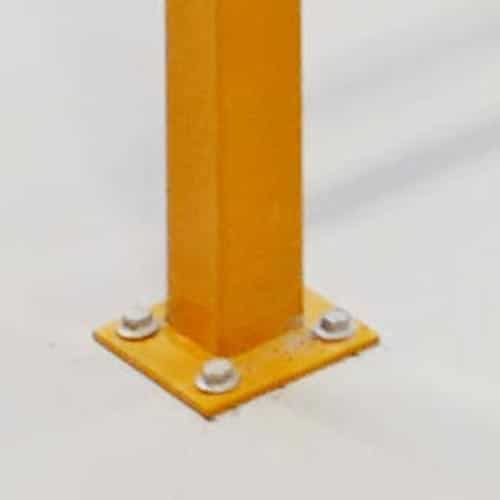When you have both people and moving machinery in the same space it’s crucial to create a clear segregation between the two and help eliminate the risk of forklift incidents. You need to ensure that your staff, machinery, and products remain safe at all times.
The simplest and most effective way to do so is with the installation of pedestrian and forklift safety barriers.
The type of barrier you choose depends on the speed and weight of machinery, and how you need the barrier to function in your space.
TYPES OF SAFETY BARRIERS
Keeping machinery and people separate is critical for maintaining a safe worksite. There are risk factors in any workplace, but by utilising robust safety equipment, you can work towards ensuring the health of your staff isn’t compromised.
Safety barriers, also known as protective railings or barricades, are designed to reduce the risk of workplace injury by physically separating potentially harmful machinery and equipment from coming into contact with employees and other pedestrians.
Safety barriers typically come in two materials: lightweight plastic or durable steel tubing. Plastic barriers are flexible and easy to move, while steel barriers are designed to withstand the test of time and intense impact.
What safety barriers are used for
There are several different types of warehouse safety barriers. These include:
- Pedestrian barriers: designed to keep pedestrians clear of vehicles and machinery in warehouse environments.
- Bollards: short post-like structures which form a protective guideline or boundary.
- Forklift barriers: strong structures used for preventing forklift and pedestrian collisions.
- Racking protectors: protection for your racking against unexpected impact, which also increases the longevity of your racking.
- Expendable barriers: designed to restrict pedestrian access to dangerous areas while providing easy retraction.
Ensure your safety barriers are always free from clutter for optimal visibility.
Maintenance
It’s important to regularly inspect your safety barriers to confirm they are in complete working order at all times. Preventative measures are highly effective, and we recommend performing regular safety checks to locate any potential damage or any major wear and tear. Doing this will enable you to repair issues before the associated risk increases.
You should also consistently monitor workplace traffic flow and adjust your barriers according to any changes in movement patterns.
Please reach out to us with your specific needs or if you have any questions about our offerings. We will help you find affordable, effective safety barrier solutions for your business.
PEDESTRIAN BARRIERS
Specifications
- H1050mm and length to fit
Key features
- Clearly defined visual separation for walkways
- Not designed for heavy impact
- Lightweight steel
- Modular design suited to any length
- Lower cost option
- All components are fully replaceable should any damage occur
- Self-closing gates available
- Comfortable hand rail
- Our system is designed to meet or exceed the requirements of relevant AS/NZS standards
FORKLIFT BARRIERS
Our forklift barriers are a sturdy stopping force that help to avoid forklift & vehicle collisions. They are designed to segregate work zones and protect your staff, your stock, and your building from vehicular impact.
Specifications
- H1050mm and length to fit
Key features
- High visibility, heavy duty steel engineered to withstand heavy impact
- Slim profile to minimise use of space
- Self closing gates and hand rails available
- Modular design suited to any length, quick and easy installation
- All components are fully replaceable should any damage occur
- Absorbs impact reducing “shock” to driver &protects floor from blowing out
- Meets or exceeds AS/NZS standards









